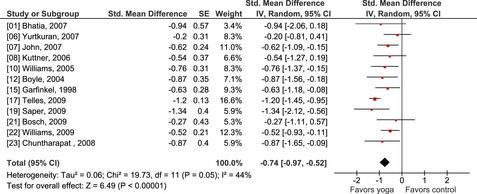Pain Management
Chronic Pain Management
Effects of Yoga Interventions on Pain and Pain-Associated Disability: A Meta-Analysis
Büssing A, Ostermann T, Lüdtke R, et al (Univ of Witten/Herdecke, Germany; Karl und Veronica Carstens-Stiftung, Essen, Germany; et al) J Pain 13:1-9, 2012§
Evidence Ranking
• A
Expert Rating
• 2





